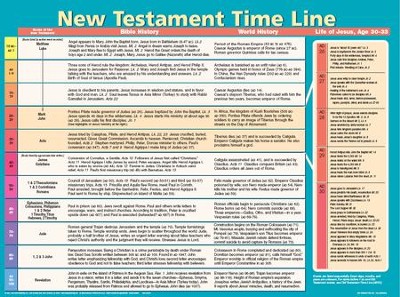Blog
“More Gospel Chronology”
Categories: Bulletin Articles, M. W. Bassford
Our reading for this week features three stories that appear in all three of the Synoptic Gospels: the healing of the leprous man, the healing of the paralytic, and the call of Matthew/Levi. However, an examination of the context of these stories reveals that Matthew handles them differently than Mark and Luke do.
Mark places them back to back to back except for a brief summary of Jesus’ ministry in 1:45, Luke does the same, but Matthew includes a chapter’s worth of material (Matthew 8:5-34) between the healing of the leper and the healing of the paralytic. In his narrative, the healing of the centurion’s servant, the healing of Peter’s mother-in-law, the cost of discipleship, the stilling of the storm, and the story of the demons and the swine all come between the two.
Normally, I regard Luke as the most chronological of the gospels, but here, I think it is Matthew rather than Mark and Luke who is organizing his material chronologically. Mark has taken three stories that occur out of strict sequence and arranged them thematically, and Luke has done the same (this happens, I think, because the gospel of Mark is one of Luke’s sources).
In Mark’s account, everything from 1:39-2:22 is about the true nature of Jesus’ healing (though 2:15-22 is shared with the next Markan theme—the opposition of the Pharisees). The first story, the story of the cleansing of the leper, reveals the limitations of Jesus’ power. His subject is physically healed, but spiritually, he remains disobedient. Rather than obeying Jesus’ command to be silent, he tells everyone about the miracle.
The next story in the sequence, the healing of the paralytic, uses physical healing as proof of spiritual healing. Jesus tells the paralytic that his sins have been forgiven. Then, so that all the incredulous onlookers can know that Jesus is telling the truth, He cures His paralysis too—an actual outward sign of an inward grace!
All of this prepares us for Jesus’ summons of Levi from the tax booth. “Follow Me,” He says, and Levi does. In Luke’s account, Jesus clarifies for us in 5:32 what just has happened. He has called a sinner to repentance.
But how can we know this? How can we know that the heart of the loathsome tax farmer has been changed? How can we know that he has been spiritually healed and reconciled to God?
Simple! The previous story has proven the point. Because the paralytic walked, we can be sure that the Son of Man has authority on earth to forgive sins—even the sins of a tax collector like Levi! Even today, Jesus’ miracles of physical healing should reassure us that we have been spiritually healed, and that through His power, we can continue to be.
All this should also teach us a powerful lesson about the depth and the intricacy of the gospels. Yes, Mark 1:39-2:22 does contain three stories about Jesus, and we can understand them and appreciate them separately as Jesus stories, but much more is going on in the gospels than merely that! Once we begin to consider the arrangement of these narratives and the authors’ (and/or the Author’s) reasons for so doing, we can come to a more profound appreciation of their meaning and relevance to us.





